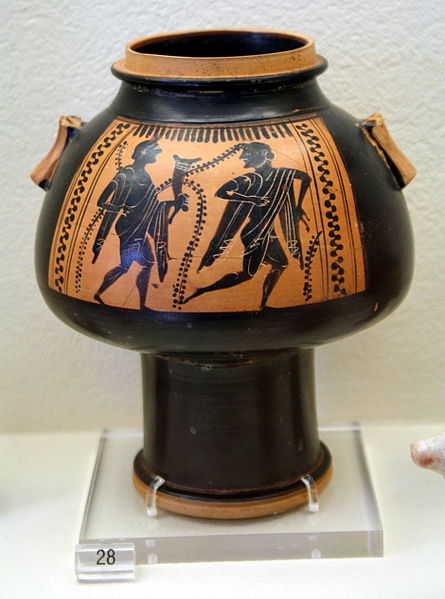Red-figure pottery is a style of ancient Greek pottery in which the background of the pottery is painted black while the figures and details are left in the natural red or orange color of the clay.
Procession of men, kylix by the Triptolemos Painter, circa 480 BCE. Paris: Louvre
The wedding of Thetis, pyxis by the Wedding Painter, circa 470/460 BCE. Paris: Louvre
Black-figure scene on the Belly Amphora by the Andokides Painter (Munich 2301). Munich: Staatliche Antikensammlungen
Red-figure scene on the Belly Amphora by the Andokides Painter (Munich 2301). Munich: Staatliche Antikensammlungen
Pottery of ancient Greece
Pottery, due to its relative durability, comprises a large part of the archaeological record of ancient Greece, and since there is so much of it, it has exerted a disproportionately large influence on our understanding of Greek society. The shards of pots discarded or buried in the 1st millennium BC are still the best guide available to understand the customary life and mind of the ancient Greeks. There were several vessels produced locally for everyday and kitchen use, yet finer pottery from regions such as Attica was imported by other civilizations throughout the Mediterranean, such as the Etruscans in Italy. There were a multitude of specific regional varieties, such as the South Italian ancient Greek pottery.
Pottery of ancient Greece
Hellenistic Amphorae, stacked the way they were probably transported in antiquity, display in the Bodrum Museum of Underwater Archaeology
Disjecta membra (a fragment of ancient Greek pottery)
Neoclassical "Black Basalt" Ware vase by Wedgwood, c. 1815 AD








